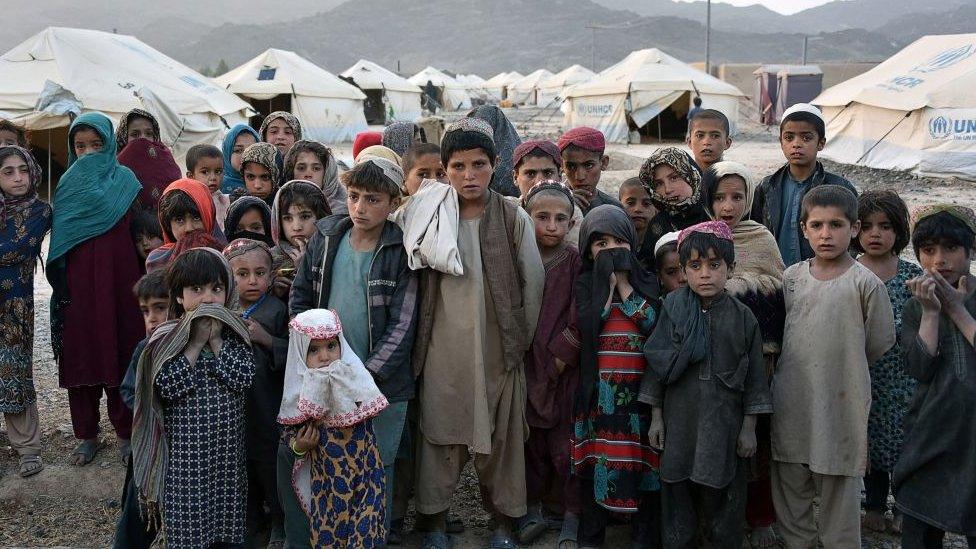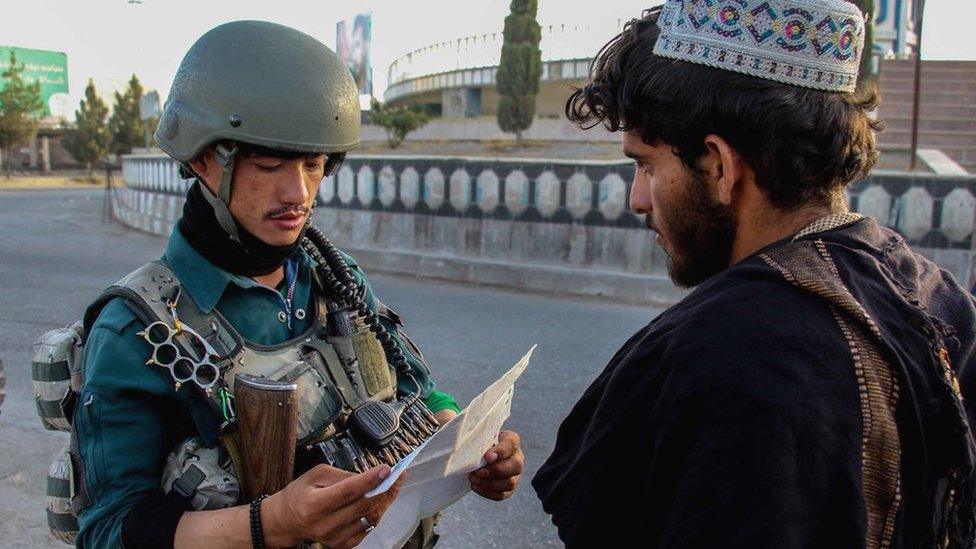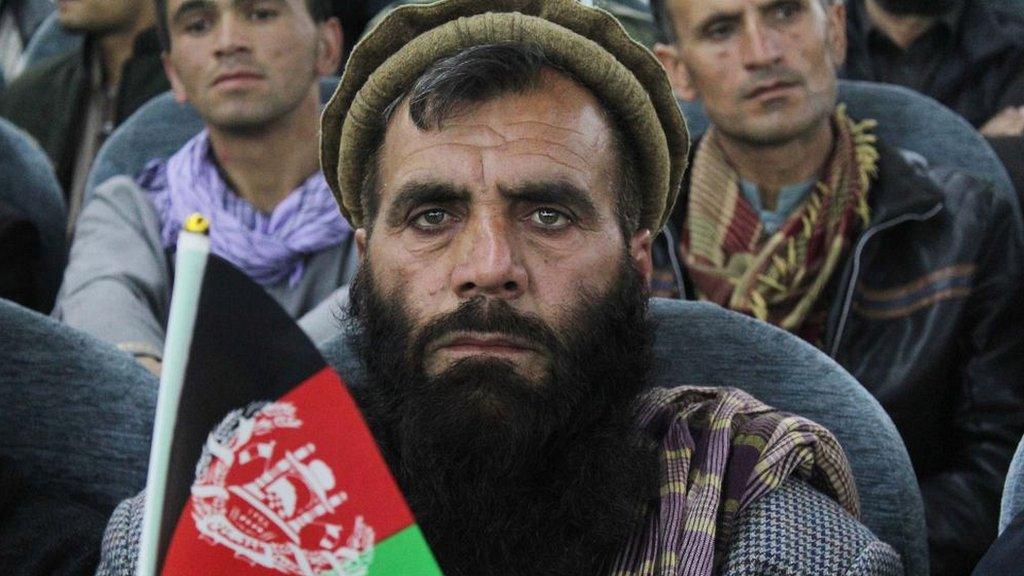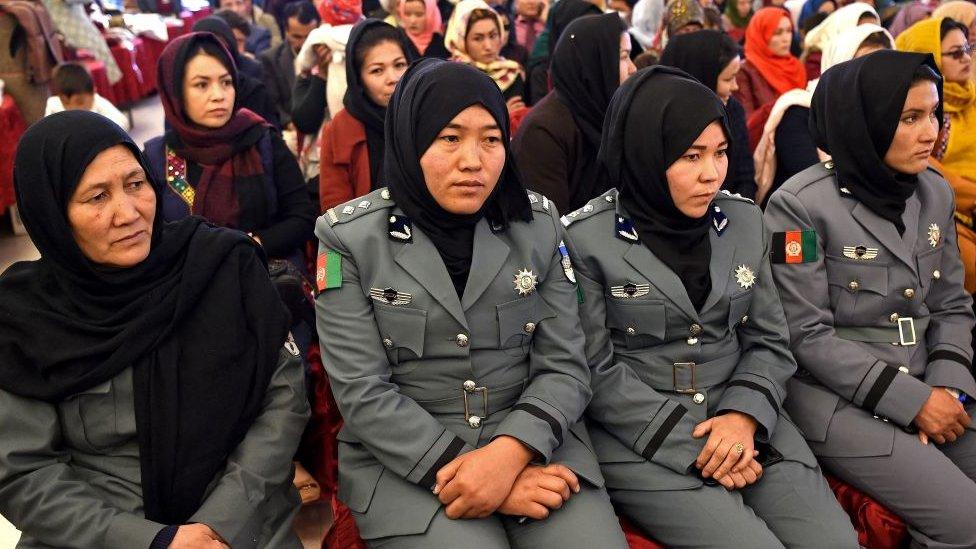Afghanistan: What has happened to violence, poverty and women's education?
- Published

With the withdrawal of US and Nato troops nearing completion, direct foreign intervention in Afghanistan is ending after nearly 20 years.
US President Joe Biden has said that Afghans are going to have decide their own future.
We look at the current situation, and at what has changed since foreign troops entered the country in late 2001.
How violent is Afghanistan?
Fighting has intensified in recent weeks.
The Taliban have been on the offensive, taking territory and there have been reports of Afghan government personnel in some areas fleeing their advance.

Afghan government forces are now responsible for security
The UN warned in June that the conflict could escalate as foreign forces pull out.
The first three months of this year were already more violent than the same period in 2020, going by US and UN data.
The US body which oversees reconstruction efforts in the country says that from the start of January to the end of March this year, enemy attacks were up by 37%., external

In the first three months of this year, the UN says the number of civilians killed and injured was significantly higher than the same period a year ago, with increasing numbers of women and children among them., external
The majority of these were attributed to insurgent groups such as the Taliban.
In 2020, more than 3,000 civilians died - the seventh year in a row this had happened., external

The UN also noted a spate of targeted killings last year, often of figures from civil society, the media, the judiciary and the civilian administration.
However, the total number of civilian casualties in 2020 - deaths and injuries - was down on the totals for 2019 and 2018.
How have things changed for women?
Data from the country's national statistics agency, external shows that although the majority working in government departments and major public bodies are still men, the number of women working has grown in the past two decades.

The figures show that in 2004, there were just over 51,200 women working in these sectors. That had risen to nearly 87,000 by 2018 (the last year for which data is available).
And the percentage rise in the number of women employees was higher than for men (69% compared with about 41%).

Afghanistan recently pledged to double the number of women in the police force
A recent US official report on gender equality said there were now "unprecedented" numbers of women in public office, with legal minimum quotas set for women in the national parliament, as well as in provincial and district councils., external
It also pointed to a big increase in women police personnel - from only 180 in 2005 to 3,560 by 2019 - as well as an increase in the proportion of women judges from 5% to 13% between 2007 and 2018.
What about education for women?
Human Rights Watch says that the number of children in school at all levels has increased from 0.9 million in 2001 to 9.2 million in 2017 - with 39% of them girls.
UN data shows that by 2012, the figure for girls enrolled in primary education had grown to more than 40%, although it's come down slightly since then.

The UN agency responsible for providing humanitarian aid to children, Unicef, said in a 2019 report that, external "girls in Afghanistan were significantly less likely to attend school than boys across all ages, but the gender gap widens from age 10 and peaks at 14".
Unicef also says that in large parts of Afghanistan, especially in areas controlled by the Taliban and other insurgent groups, school enrolment rates for girls were very low.

There are more women working in the education sector. By 2018, about one-third of Afghanistan's teachers were women, and literacy rates among girls have risen.
The number of female students at government universities has increased nearly seven times between 2002 and 201, more than the increase in that period for male students, according to Afghan government figures.
It is worth noting that US officials have pointed to issues with government data, saying that student enrolment figures may have been inflated for a number of reasons., external
What about poverty levels?
Afghanistan is one of the poorest countries in the world, but after the US invasion in 2001, there was fairly rapid economic growth with international aid pouring in., external
This was reflected in GDP figures which averaged 9.4% between 2003 and 2012, according to the World Bank.

But growth has slowed as aid flows have decreased, and the security situation has worsened. In addition, growing numbers of Afghans have returned from abroad since 2015, swelling the population.
A government survey of living conditions for 2016-17 found that more than 54% of the population were living below the national poverty line of 2,064 Afghanis per person per month (equivalent to about $31 or £25 as of 1 January 2017).
This percentage had gone up from around 38% in poverty between 2011 and 2012., external

A more recent survey by Gallup in August 2019 pointed to severe droughts in the last few years affecting food security.
It said that nearly six out of every 10 Afghans told them they had struggled to afford food at times in the previous year., external
